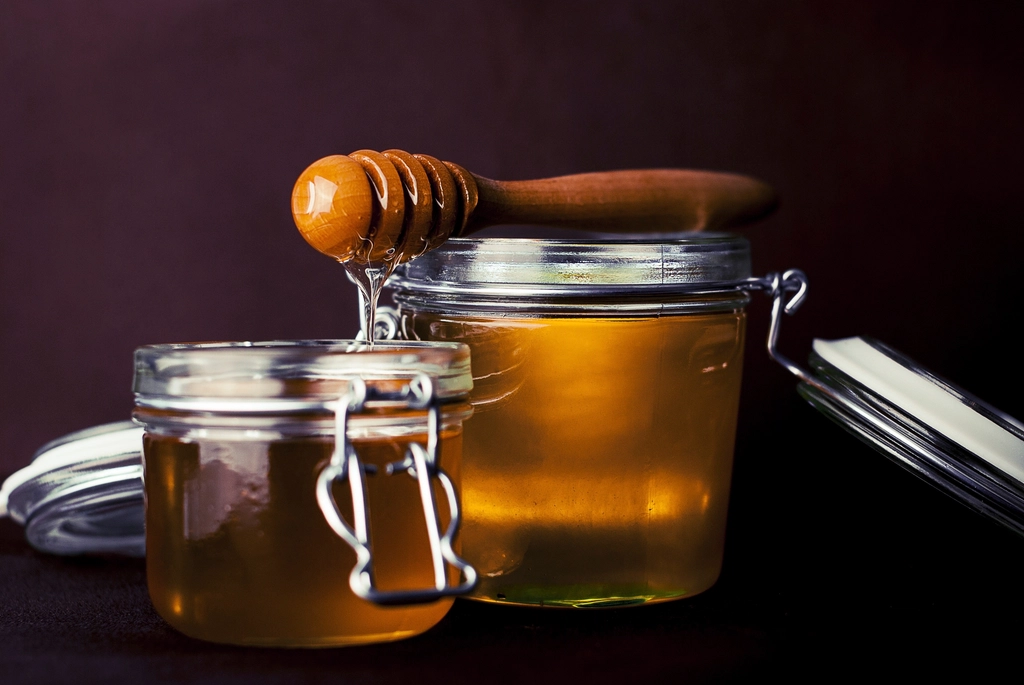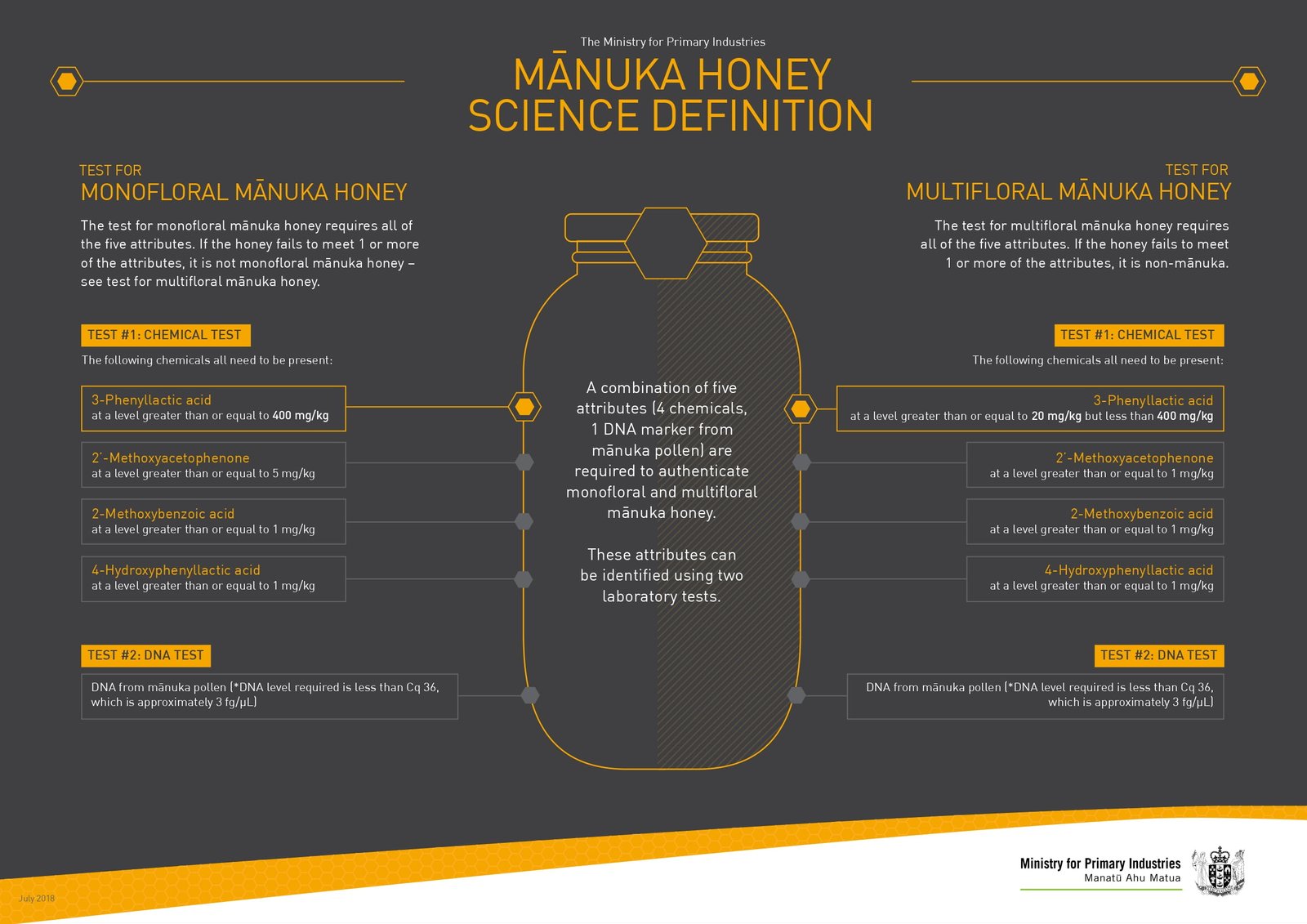Mānuka Honey UMF vs MGO
UMF and MGO are the most commonly used grading systems and the most trusted.
UMF and MGO serve as standardized measures indicating the concentration of certain bioactive chemical compounds present in manuka honey.
Mānuka honey is produced by bees from the Mānuka plant, known globally for its rare and powerful health benefit. However, selecting the best Mānuka honey can be daunting. With various grading systems, it’s easy to question the numbers and letters on jars of Mānuka honey. What do they mean? Why are they important? How should you use this information when selecting honey? In this article, you will find the answers.
Why Do We Use Manuka Honey MGO vs UMF grading?
Mānuka honey is renowned for its health benefits due to high levels of methylglyoxal (MGO) and other natural nutrients. These properties have been extensively studied by scientists and researchers, confirming Mānuka honey’s unique therapeutic qualities. These chemical compounds can help your body resist infection, improve skin health, and aid digestion.
However, the popularity of Mānuka honey has led to the presence of counterfeit or subpar products in the market. To protect consumers and ensure the authenticity of Mānuka honey, several grading systems have been established. The two most widely recognized and reliable grading systems are UMF™ (Unique Mānuka Factor) and MGO. Understanding these grading systems is crucial when selecting Mānuka honey. So, what sets them apart, and what should you look for when making a purchase? Let’s dive deeper.

What is Mānuka MGO
MGO, short for methylglyoxal, is a chemical marker used to determine the level or rating of Mānuka honey. It was initially identified as the compound responsible for imparting Mānuka honey with its distinctive antibacterial properties. Dr. Peter Molan, a biochemist at the University of Waikato in New Zealand, discovered the unique non-peroxide antibacterial properties of Mānuka honey in the early 1980s. His work, which includes over 90 scientific papers, has significantly advanced the medical use of Mānuka honey, especially in wound healing and infection control (Read more…).
The number that follows ‘MGO’ refers to the amount of methylglyoxal in mg/kg. For example, an MGO 83+ Mānuka honey product is certified to contain at least 83 mg of methylglyoxal per kilogram of honey. Studies have found a direct correlation between MGO levels and the honey’s antibacterial activity: higher MGO concentration corresponds to stronger antibacterial effects.
What is Mānuka UMF
UMF, or Unique Mānuka Factor, is a comprehensive grading system that assesses MGO levels along with authenticity markers like dihydroxyacetone (DHA) and leptosperin. The number on the label represents the amount of MGO in the bottle as well as providing a broader guarantee of authenticity, origin, and composition. Like MGO, higher UMF ratings typically denote higher concentrations of these beneficial compounds, making the Manuka honey more potent and effective for various health benefits. The UMF number can range from UMF 5+ to U30+.

Differences Between Manuka Honey UMF vs MGO
MGO is the chemical that was originally identified as giving Mānuka honey its unique antibacterial characteristics. The UMF™ level varies based on the amount of MGO present in the honey. As two individual Manuka honey grading systems, UMF™ is a complete and advanced grading system. It incorporates the measurement of MGO levels but also includes additional testing of authenticity markers of the Mānuka honey.
UMF™ is an indicator of quality and purity of Mānuka honey. To earn a UMF™ grade, a batch of Manuka honey must be tested as ‘monofloral,’ meaning most or all of the nectar comes from the Mānuka plant and is not blended with other honey. This comprehensive testing makes UMF™ a purer and more advanced indicator of quality, purity, and authenticity.
Manuka Honey UMF vs MGO: Which is the better
New Zealand enforces stringent regulations governing Manuka honey to ensure its authenticity and quality. Unlike many other countries, New Zealand has established dedicated departments and implemented rigorous testing procedures to define and manage Manuka honey production.
In New Zealand, any honey labeled as Manuka for export must undergo testing by an MPI-recognized laboratory to ensure it aligns with the Manuka honey definition(see below image). The Ministry for Primary Industries (MPI) mandates chemical tests to categorize Manuka honey as either “monofloral” or “multifloral.” It’s important to note that Manuka honey cannot be labeled solely based on MGO (methylglyoxal) testing. This meticulous process guarantees that consumers can confidently rely on the purity and potency of the Manuka honey they purchase from New Zealand.
In contrast, many other regions lack specific requirements and oversight, potentially resulting in inconsistencies in the quality and authenticity of Manuka honey products. As a result, many consider Manuka honey from New Zealand the gold standard due to these strict regulatory measures. Therefore, both the UMF™ (Unique Manuka Factor) and MGO grading systems are deemed trustworthy for authenticating Manuka honey from New Zealand. As a reputable supplier of New Zealand Manuka Honey, even though NZGold Manuka does not utilize the UMF™ trademark, we conduct all necessary tests to ensure our Manuka honey maintains high quality and purity.
Mānuka Honey UMF™ vs MGO Table
Although UMF and MGO are two different gradings, there still exists a correlation between UMF and MGO values.
| MGO | UMF™ |
| 83+ | 5+ |
| 263+ | 10+ |
| 514+ | 15+ |
| 829+ | 20+ |
| 1197+ | 25+ |
| 1620+ | 30+ |
A typical UMF rating ranges from 5 to 25, although it’s rare to find honey with a UMF of 30. Meanwhile, MGO ratings generally fall between double digits and 2000, with values above 2000 being unusual.

Explore our range of high-quality New Zealand Manuka honey here, we conduct all necessary tests to ensure our Manuka honey maintains high quality and purity.
